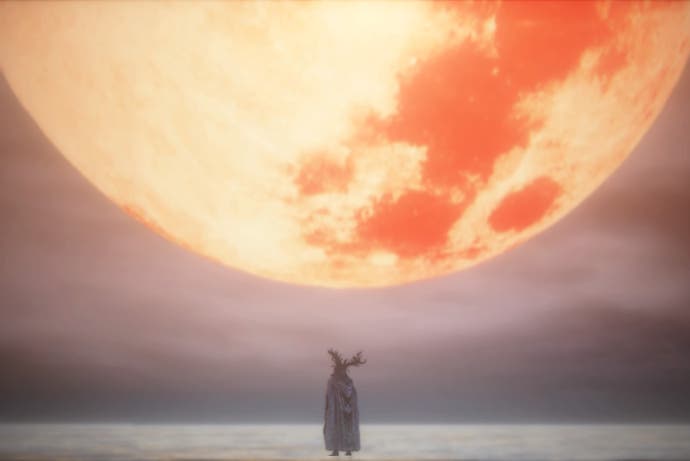How Dark Souls, Bloodborne and more imagine the cosmos
Shining a light on the stars.
Humans have gazed up at the sky and wondered about their place in the cosmos since the very beginning. Do the same in a game like, say, Breath of the Wild, and you're presented with vivid images of clouds, stars, the sun and the moon. It's an important part of this and many other games that helps to create an illusion of a continuous space that stretches beyond what we actually experience within the confines of the game. The sky implies that Hyrule, despite being a fantasy world, is a part of a cosmos very much like our own, and we accept this even though we cannot fly up and check.
Since it matches our own experience of the sky so closely, we won't spend a lot of time thinking about how the universe around Hyrule is structured. There are quite a few games, however, in which the cosmos moves from the margins to the centre. These games take a close look at, for example, how their worlds were created or might end, the rules by which they operate, or simply how the experiences of the player fit into a larger world view. In other words, they create and explore cosmologies.
Cosmology, the attempt to describe the nature of the universe, didn't start with the advent of modern astronomy, but was present throughout all of human history. Always, real observations about the world were seen and interpreted through lenses of ideology and assumptions about how the world works (even our 'objective' study of the cosmos cannot help but be coloured by our very human perspectives).
There are countless examples of cosmologies that seem outlandish to us today. One of the most fantastical and popular of these comes from Norse mythology. Here, the cosmos was held together by the world-tree Yggdrasil, whose branches and roots connected the various planes of gods and mortals and reached to the sky.
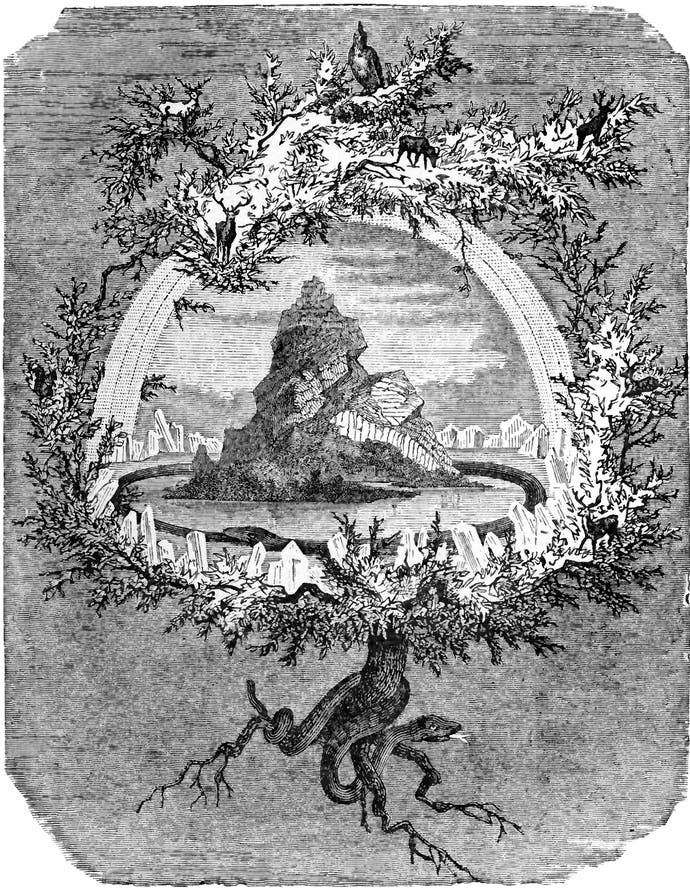
In other traditions, genuine astronomical knowledge was fitted in mystical and elaborate world views. In ancient Gnosticism, the seven known planets (that is, moon, Mercury, Venus, Sun, Mars, Jupiter and Saturn) were seen as minor demons or gods, servants of the Demiurge who created the material world that traps humans and keeps them away from a distant God. Only through Gnosis, or esoteric knowledge, could humans overcome the evil influences of the Demiurge and the planets to reach God. Many cosmologies prior to the scientific revolution posited a strongly hierarchical cosmos consisting of a series of spheres: the four elements (first earth, then water, air and fire), the celestial spheres on which all planets revolve around the earth, the firmament with its constellations, and finally the Primum Mobile, which accounted for the movement of the inner spheres. Beyond these spheres lay the Empyrean, the dwelling place of God.

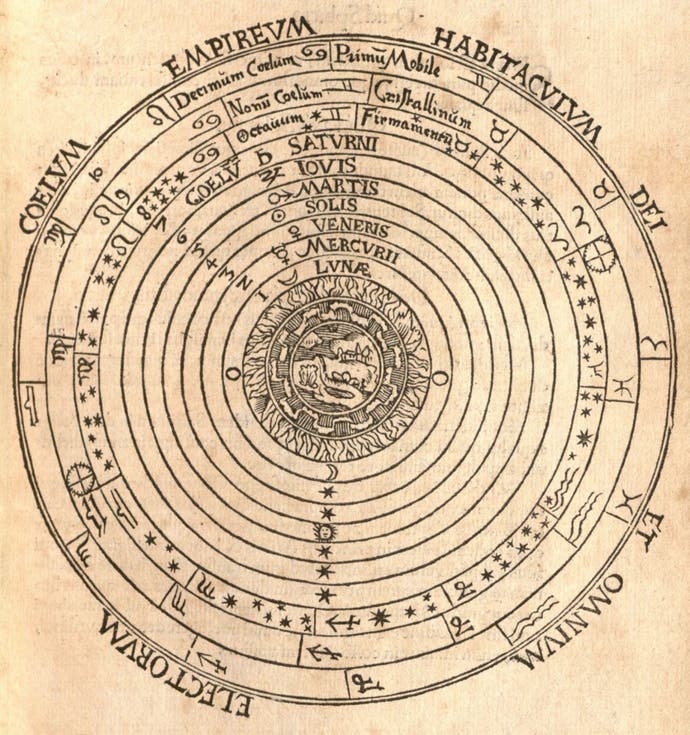
Cosmologies in video games may rarely be as complex or fantastical as historical examples, but a handful of games provide fascinating examples that portray the cosmos in ways only video games could. Chief among them are From Software's Dark Souls and Bloodborne. The intro of Dark Souls presents a creation myth or cosmogony in which the element of fire, so central to many historical cosmologies, is seen as some sort of 'creative spark' that makes possible the world as the player of Dark Souls knows it by bringing "disparity" between heat and cold, light and dark, life and death. The sun, with its symbolic presence as Lord Gwyn, also plays a major role. In fact, the player's quest is to kill the ailing sun god in order to save Lordran from cosmic stagnation; the result of Gwyn's attempts to stave off the inevitable heat death of the universe.
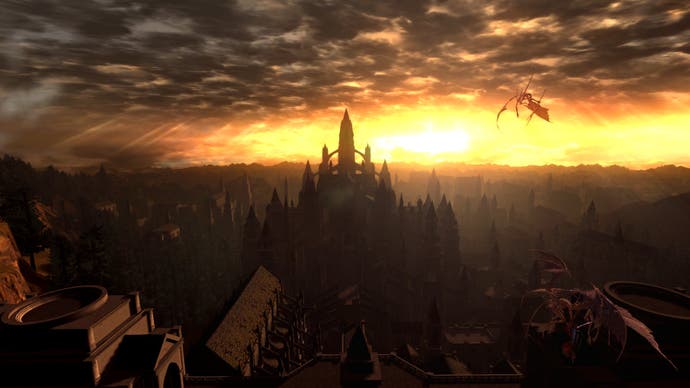



If the sun is the central motif of Dark Souls, the moon takes its place in Bloodborne. There, the moon is a constant companion throughout the game, looming low in the sky. Astrologically speaking, the moon has long been credited with causing madness or 'lunacy' (from Latin 'Luna'), which is a major theme of the game. The moon's traditional association with time is especially interesting in the context of Bloodborne's world. Ever since the ancient Greeks, Earth was thought to be located in the "sublunary sphere", the only place in the cosmos affected by time and change. Not unlike Gwyn, the stagnant moon becomes a powerful symbol for a world out of joint, an unending nightmare. In both games, these stagnant world orders are mirrored in the very rhythm of playing. The struggling player is doomed to replay the same sections over and over again; just like Lordran and Yharnam, they are stuck.
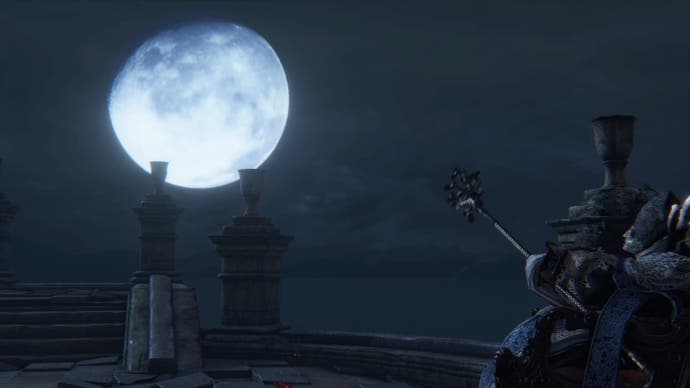
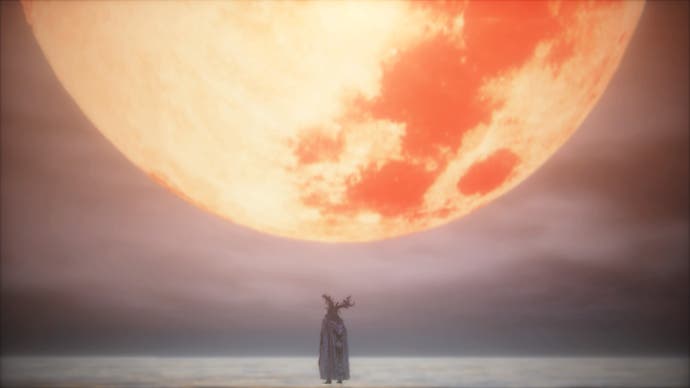
From Software therefore reveals the workings of their cosmologies through systems and the way the player experiences them on their own path. Interestingly, the conflation of macro- and microcosm is a common feature of mystical cosmologies that perceive secret correspondences everywhere in the world; in this view, every human carries within them a reflection of the universe in miniature, and the same is certainly true for Dark Souls and Bloodborne.
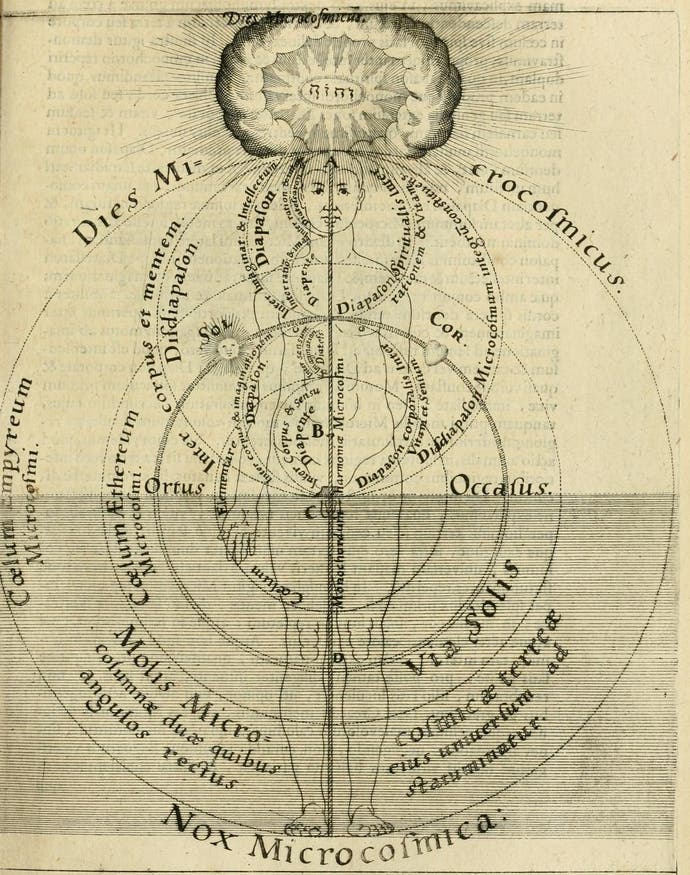
Supergiant Games' Pyre is another example where we get to know the rules of a cosmos through a game's systems. Trapped in a colourful yet deadly netherworld called the 'Underside', bands of exiles compete in ritualised ball games for the honour of Ascension; the winners may be granted amnesty and allowed to return from their exile to the upper world of the Commonwealth. This isn't a social convention, however; the stars themselves guide the bands of exiles to the site of their next competition when the time is right. This cycle is repeated many times over the course of the game, with each cycle culminating in a climactic Liberation Rite. Through its repetition, Pyre builds a strong pull and a sense of the turning of a cosmic order that cannot be escaped by mere mortals. The player is bound up in recurring events that are as immutably preordained as the sun rising in the morning.
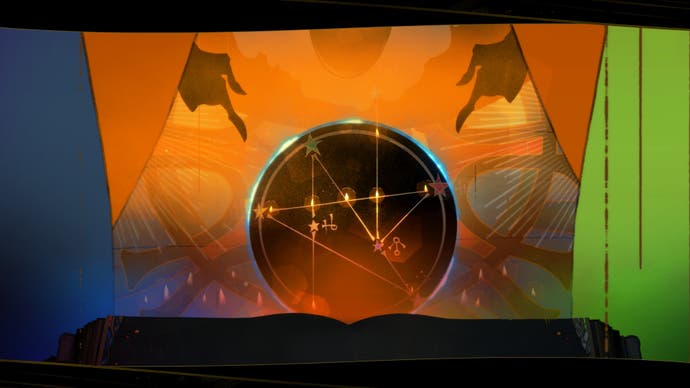
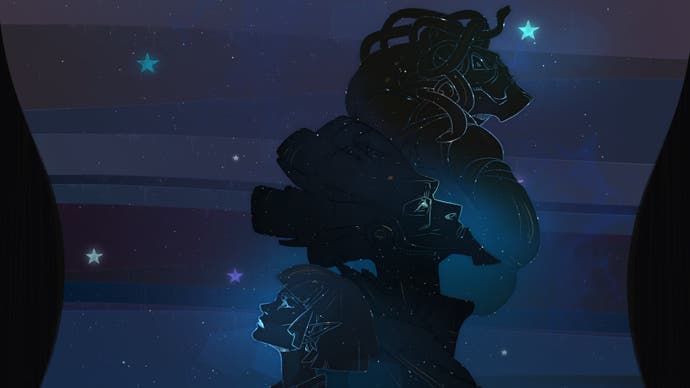
There are many more examples of cosmological world building of various kinds. Take Majora's Mask, where a sinister, anthropomorphised moon dictates the course of events. Ocarina of Time, too, shows its fascination with cosmology in its dramatization of Hyrule's creation myth. There's of course Planescape: Torment with its multiverse and crossroads world of Sigil, whose portals may lead to all the planes of existence; a meta-cosmology that can accommodate an infinite multitude of worlds. Sunless Sea creates a very unique kind of cosmos-within-a-cosmos, a subterranean ocean world existing in an alternate Victorian timeline where false-stars shine far above on the cavern roof. And then there's the byzantine metaphysical cosmos of Morrowind, which deserves its own essay.
Given the triumph of a scientific cosmology in today's day and age, it shouldn't come as a surprise that most games that give us a glimpse of the cosmos do so in a relatively predictable manner; you won't find world trees or celestial spheres in your average space sim. Instead, there'll be planetary systems, suns, the occasional black hole and lots and lots of space. Many sci-fi games use our cosmos as an alluring backdrop, a black cloth in front of which the events unfold. Still, some space games do convey something meaningful about our cosmos. Exploration games like Elite: Dangerous hint at the unfathomable vastness of the universe by providing us with a recreation of our galaxy that can be freely explored - as long as you are prepared for long travels. The Milky Way may be a drop in the ocean of a universe that contains at least two trillion other galaxies, but one whole galaxy is big enough for most intents and purposes as far as video games are concerned.
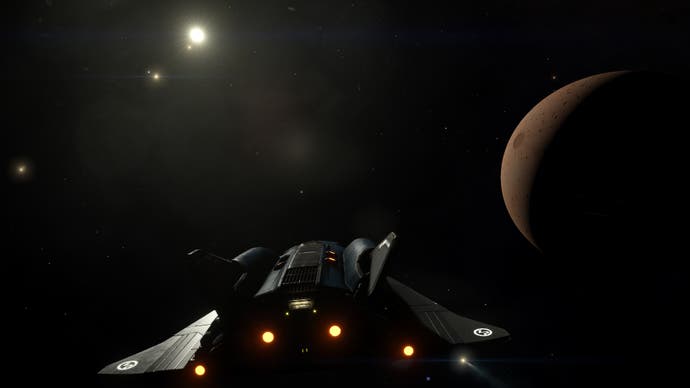

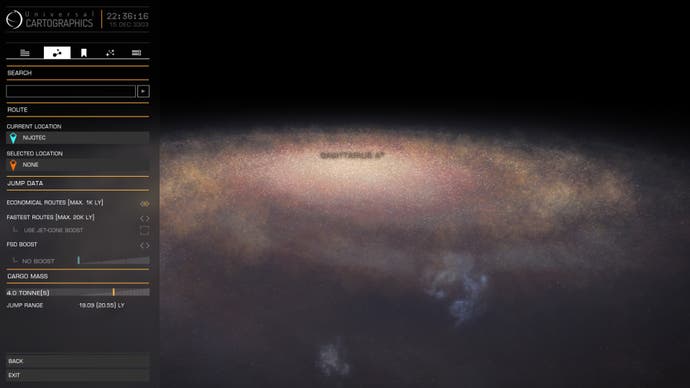
While travelling in-between solar systems is a matter of pressing a button in Elite, the 'simple' act of getting into Earth's orbit, let alone reaching the moon (or 'Mun'), can be a massive challenge in Kerbal Space Program. It may lack the cosmological ambition of other space exploration games when it comes to scale, but it effectively communicates something about the cosmos that few games even attempt: the complexity and extreme danger involved in venturing outside the cosy confines of our tiny birthplace. In the end, however, whether you're spending dozens of hours exploring deep space in Elite, or crashing one spacecraft after the other in an attempt to safely land your little green astronauts on Kerbal's Mun, it boils down to this common assumption: that the universe beyond our home planet can be experienced and lived, and not just imagined, as long as ingenuity and technology clear the way. This idea would have been almost unthinkable just a few centuries ago, but today is the tenor of most sci-fi media, especially games.
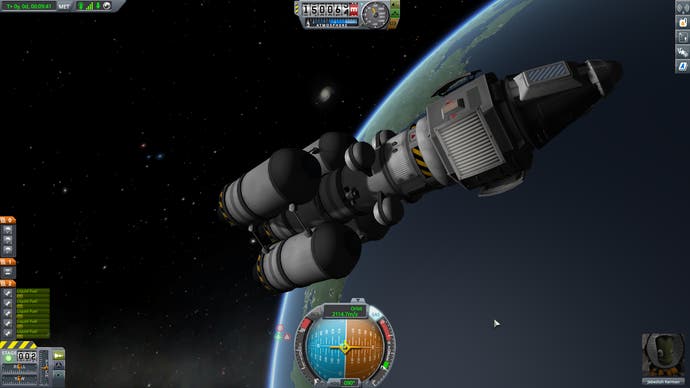

There are other ways in which games explore the cosmos. Some take astronomical ideas and stitch them together in nonsense cosmologies. Modern Super Mario games may be the best example of this. They are full of symbols like stars or moons that have little in common with their real counterparts. While collectable stars or moons that fit into a plumber's pockets and fuel a flying hat may be easily dismissed, other aspects show a more genuine interest in cosmological phenomena. Take gravity, for example. In the Galaxy games, Mario sticks to the 'planetoids' and can even use his jump to escape their pull and 'land' on different objects. In Odyssey, gravity works differently on the moon than on earth and lets you jump higher and fall more slowly. Mario's cosmos may be absurd, but it too works according to a set of rules that is experienced through play.
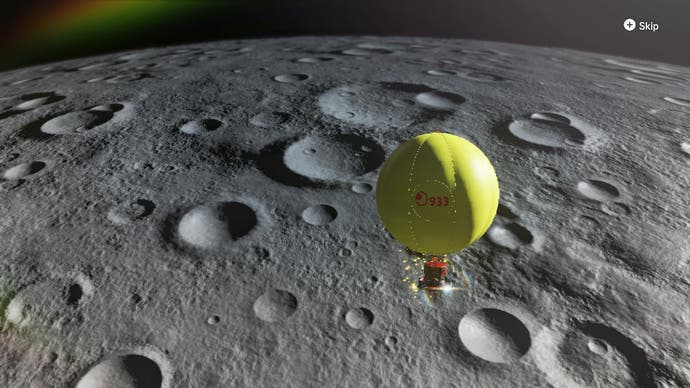
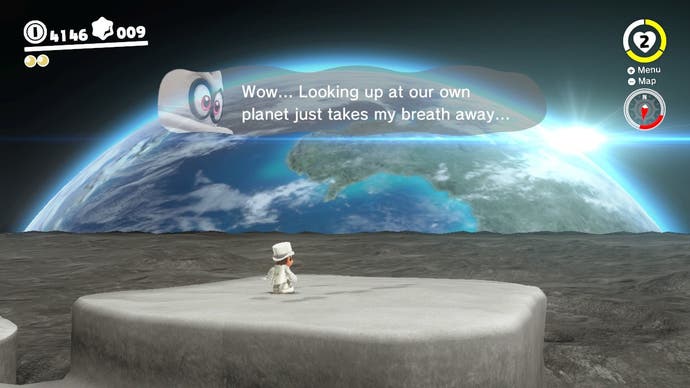
Whether they use Italian plumbers, spaceships or mythic sun gods, games are an ideal device to bring cosmology to life. Through their systems, they let us experience the ingenuity with which humans have tried to make sense of their world throughout history, bring the vastness and complexity of our cosmos within reach through simulations, or simply create cosmic playgrounds whose sole purpose it is to delight. Still, there's much that hasn't been tried yet, many cosmologies left unexplored. Personally, I'd love to see a space exploration game set in a classical cosmos of celestial spheres that gives me the chance to listen to the Musica Universalis while I drive my spaceship right to the edge of the Primum Mobile.
